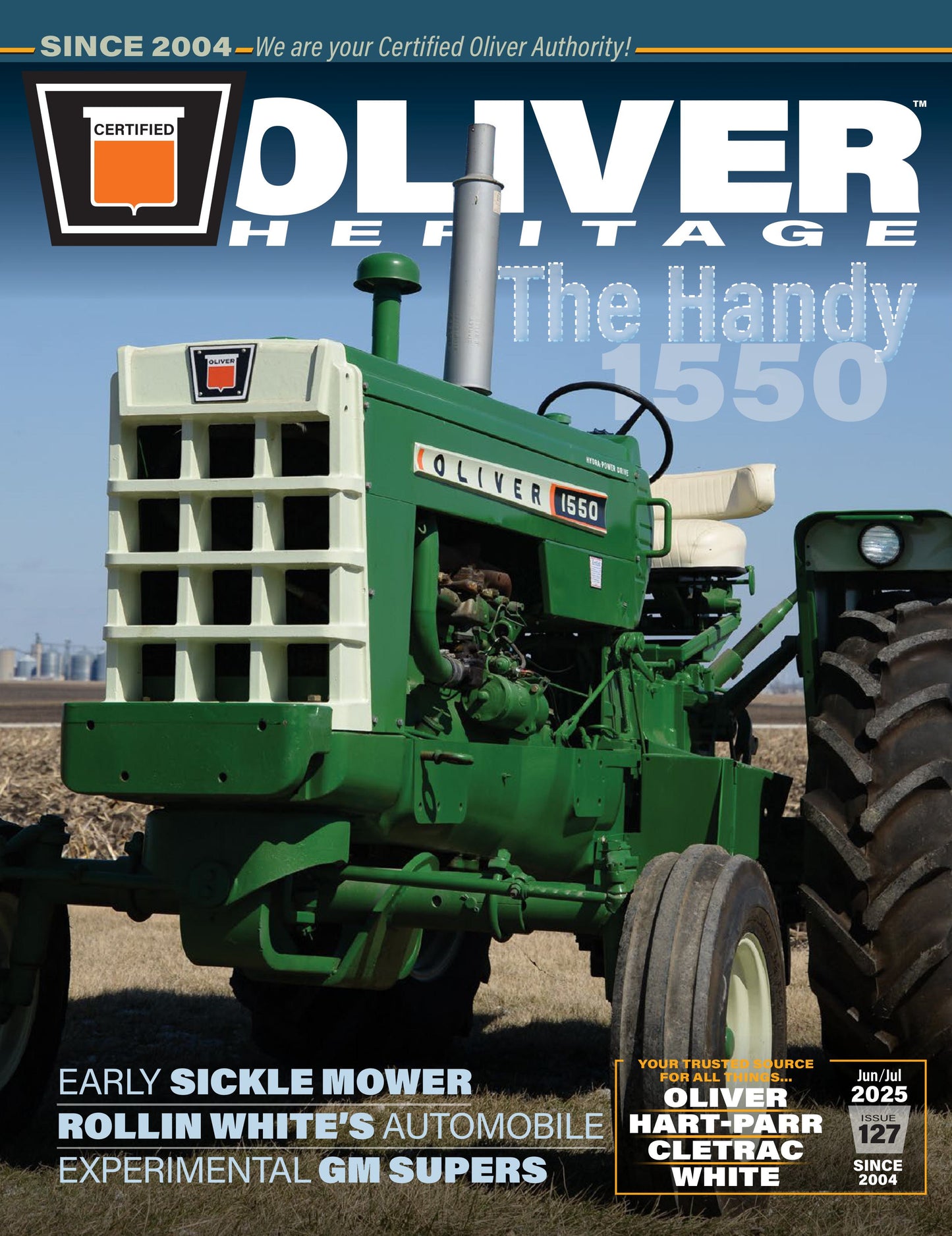3 Point Ink LLC (Heritage Iron/Oliver Heritage)
Oliver Heritage Issue #127
Oliver Heritage Issue #127
Regular price
$6.99 USD
Regular price
Sale price
$6.99 USD
Unit price
per
Couldn't load pickup availability
Oliver Heritage Issue #127 June/July 2025
- Featuring: Oliver 1550 Utility. The 1550 would join the family of the 1650, 1850, and 1950 introduced the previous year. While the 1650 was the replacement for the 1600, that model had been designed to replace the 880. Even though horsepower and bigger tractors were constantly on the rise, the longevity of the 770 proved there was a need for a model of that size, thus the 1550 was born. Feature tractor owner: Franklin Gaisler - Mount Pulaski, IL.
- Cletrac Facts: The Cleveland Tractor Company was incorporated in 1916 by Rollin H. White as the Cleveland Motor Plow Company. Their first crawler tractor was the Cleveland Model R powered by a 4-cylinder headless Buda engine rated at 12-drawbar and 20-belt horsepower. The 1920s brought about some change, however, and Rollin H. White pursued the automobile business again. Enter the Rollin Car.
- Restoration vs. Preservation: Floyd County Museum’s approach to its tractor collection. What is the proper procedure for restoration and preservation of an antique tractor or historic vehicle being kept as an authentic artifact? How does the museum approach restoration? As a museum, Floyd County acknowledges these questions are important to address.
- Oliver & GM: Tractors that could have been. We all know about the long-standing relationship between Oliver and Waukesha, but Oliver also had a great relationship with GM. Many of Oliver’s top men worked at GM previously or had experience with them, leading to a more personal relationship between the two companies and an even better working relationship. This article dives into the history of Oliver's experimental Supers.
- Oliver Sickle Mowers, part 1. Prior to the mid-1960s, yard care here in the Corn Belt was fairly simple. Most farmers used a reel mower in the yard near the kitchen door and a sickle mower on the balance of grass around the home and outbuildings. That generally happened in conjunction with cutting the hay fields; quite a contrast compared to the twice-each-week, mowing-by-the-cup-holding, electric-starting, zero turn mowers of today. Like most farmers then, our road ditches were only cut once a year, if at all. And, yes, I say “cut” rather than mowed, because our tool of choice for cutting ditches was an Oliver sickle mower behind a Fleetline of choice.


